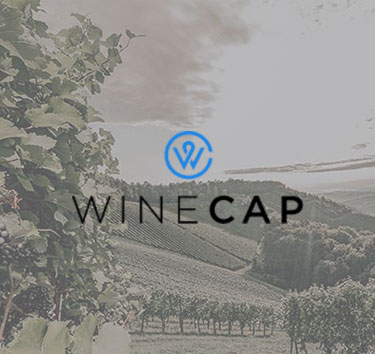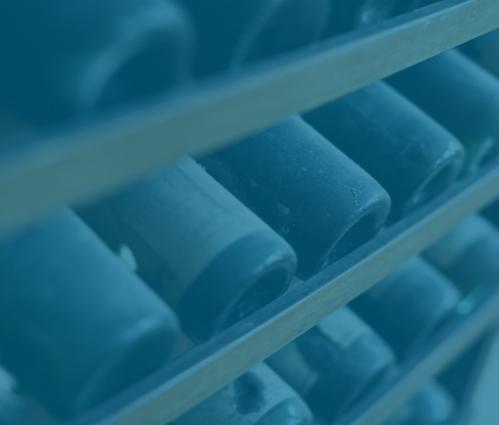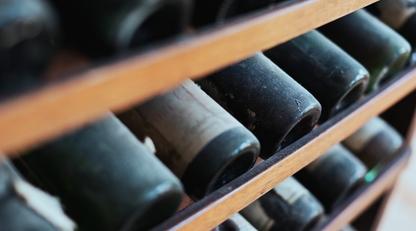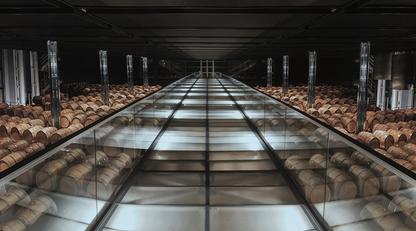Lucie & Auguste Lignier, Gevrey Chambertin Aux Combottes
+350%-10 year return


Lucie & Auguste Lignier, Gevrey Chambertin Aux Combottes

Lucie & Auguste Lignier, Gevrey Chambertin Aux Combottes

Lucie & Auguste Lignier, Gevrey Chambertin Aux Combottes

“I have always been impressed by their professionalism and their competitive pricing. I have trust and confidence in WineCap”

“I am a new investor to the wine industry and in Martin and WineCap I found an informative and exciting guide”

Wine is part of a group of investments collectively known as ‘treasure assets’. These include things like art, jewellery, antiques, watches, antiquities, toys and classic cars. Those considering investing in wine as part of their wider portfolio often do so in the context of these other treasure assets, so it’s worth understanding the similarities and differences. While we wouldn’t want to discourage anyone from investing in other sectors, these differences illustrate why we think wine is the best option for most investors when it comes to treasure assets.
Product homogeneity: a homogenous product is one that cannot be distinguished from another and that can be easily substituted. While wine isn’t perfectly homogenous, it’s certainly close. As far as the market is concerned, one case is essentially the same as any other. It’s a different situation with most other treasure assets. The value of one Monet painting will tell you relatively little about the price another will fetch. Even with industrially manufactured products such as classic cars, their condition, mileage and service history can have an outsized impact on pricing and desirability.
Established storage and logistics: while it’s increasingly common for art to be stored in free ports and for classic cars to be kept in professional storage facilities, wine still has an advantage here. There is a long-established global network of affordable wine storage facilities that ensure a wine’s provenance is documented, as well as keeping it in top condition. Should the owner wish to stop investing in wine and drink it, final mile delivery can easily be arranged.
An established marketplace and data: in 2021, data on the performance of wine as a collective and on individual wines is relatively easy to obtain and to track. Thanks to product homogeneity, WineCap is able to provide valuations quickly and easily, allowing investors to know at any point, exactly what their wines are worth. Wine also has well-established marketplaces and a relatively low transaction cost. In comparison, art is usually sold at auction houses which command high fees, 20-30% is not unusual once all costs are considered, or in galleries where markups can be 50% or more. Costs to use online wine trading platforms or merchants such as WineCap are significantly lower.
Low cost: when compared with other treasure assets, even investing in wines that are at the top-end is somewhat affordable. This is one of the reasons why prices are generally robust and unaffected by the global economic climate. Imagine someone who regularly buys investment-grade wine; a financial crash might put them off buying a £20m Ferrari 250 GT LWB California Spider, but will it deter them from taking up their annual allocation of £15,000 Domaine de la Romanée-Conti?
Low cost of ownership: a Ferrari F40 has to have its fuel cells replaced every ten years and the parts alone for that one item could run to £30,000. If the batteries in your Mclaren P1 need replacing, that’s £100,000. A case of wine, regardless of value, shouldn’t cost more than around £15 a year to keep in perfect condition.
An improving asset in diminishing supply: there’s no other asset in this class that both improves and becomes rarer with age. This advantage is unique to fine wine.
Above all, the argument for wine is fundamentally one of investment returns. The graphs above show that, over the long-term, wine has comprehensively outperformed both the treasure assets it is most similar to, as well as more mainstream assets. We believe there is a place for investing in wine in any portfolio.
Want to find out more? Schedule a free consultation with one of our wine investment experts.

Ever since the UK voted to leave the European Union in 2016, trade talks and negotiations between the two sides had been full of uncertainty, posturing and brinkmanship which at times made it feel like a deal was unobtainable. So, the news that a trade deal – now ratified by the UK Parliament – had been struck on Christmas Eve in 2020 was met with welcome relief across all industry sectors on both sides of the Channel and especially by those looking to invest in wine.
1. The costly VI-1 import documentation for UK and EU wines is no longer going to be introduced in July as previously planned. Taking its place will be a straightforward Wine Import Certificate which asks for basic producer and product information. This means far less admin and fees for wine importers, which in turn means no extra costs will be passed on to customers.
2. Crucially, wines will not have to undergo lab assessment for the new Wine Import Certificate. Submitting wines for lab analysis would have caused backlogs of wines which would have created frustrating shipment delays.
3. While UK wine importers are going to have to get to grips with new processes and forms over the coming months, this is just part of the anticipated bedding-in period which will become second nature as time goes on and as new processes are established.
With the previous uncertainty around Brexit having disappeared with the end of the transition period and with the years to come looking as though they’ll mirror previous years of healthy returns for fine wine, contact us to speak to one of our advisors about creating your portfolio to invest in wine.

The Bordeaux En Primeur 2020 campaign is well underway and the general consensus from the trade and from critics is that this is an excellent vintage, the third in a row:
‘We have a reputation in Bordeaux to say the last vintage is the best one. But we did with 2018, 2019 and now 2020… after we did our tastings in the spring I can say it is a really great vintage. It is different from 2019 with more freshness, more tension, more balance. It’s a good one. Maybe a bit less powerful than 2019 but it made really great wine. I think that we can call it a trilogy now (three consecutive high quality vintages: 2018, 2019 and 2020).’ – Michel Rolland in conversation with James Suckling
Ahead of the Bordeaux En Primeur 2020 campaign, we’ve all been expectantly waiting to see how this year’s prices compare to 2019’s, as last year’s prices were considerably lower than previous years, due in part to the ongoing global pandemic that caused significant disruption, especially when it came to mass tastings being cancelled. Initial releases have come in either at the same price as last year or slightly higher. Increased prices are due largely to volumes being down some 25% on the year before.
The quality of the vintage has been declared as very good to excellent and the wines that have been released so far have commanded varying scores that range all the way from very good to 100 points.
As Jane Anson writes in Decanter: ‘Bordeaux 2020 is a year of contrasts, so it favoured terroirs that are best able to cope with the changes – and winemakers who were able to follow closely and help their vines adapt.’ There are some stunning wines being released and those who have done their research will reap the benefits. For expert advice, schedule a call with one of our investment analysts.
Interested in reading the Bordeaux En Primeur 2020 report in full? Access it here.